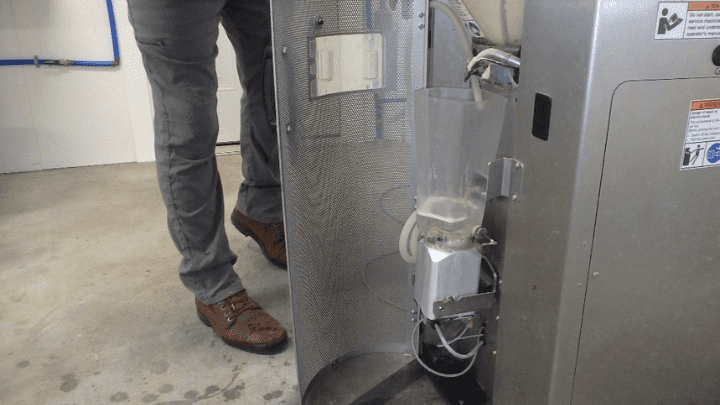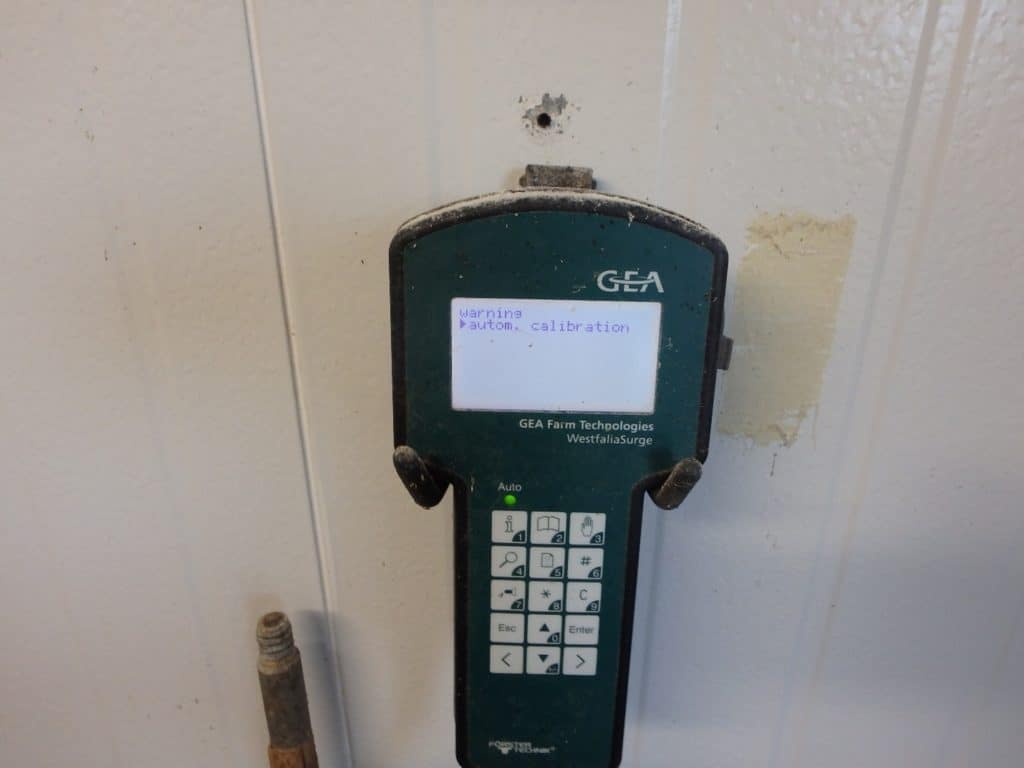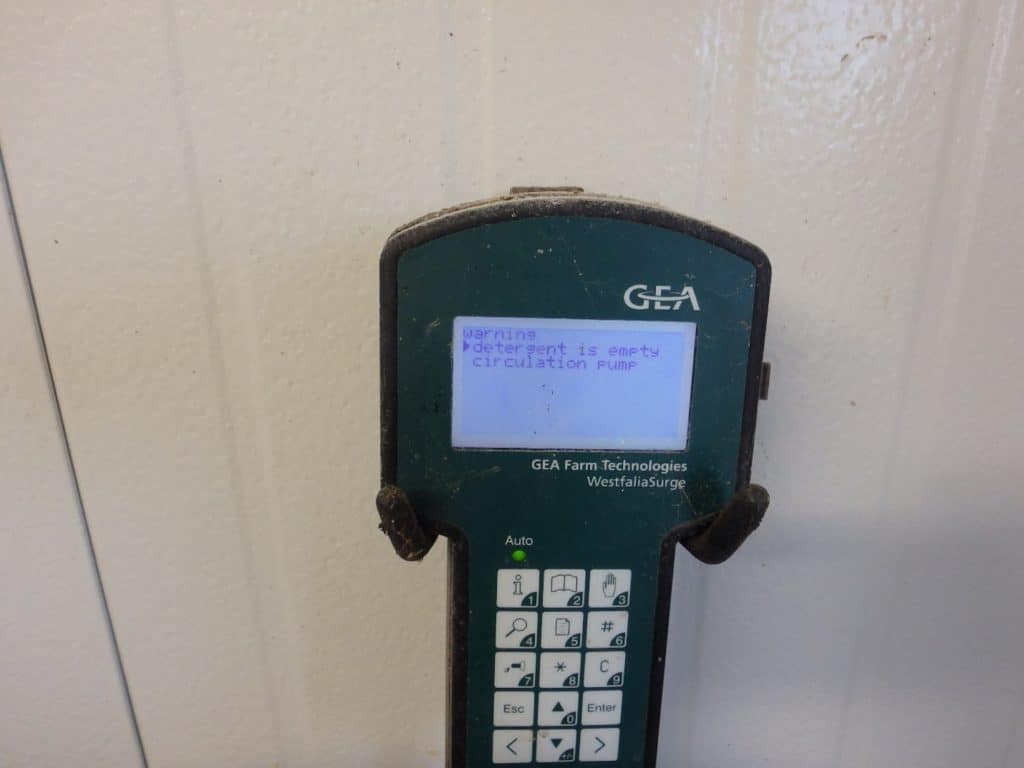The calf autofeeder system provides “opportunities” to better manage one’s calf proactively through the availability and use of data. Take a few minutes to start each day by reviewing these core areas.
Calf Autofeeder Management: Start the day right.

The calf autofeeder system provides “opportunities” to better manage one’s calf proactively through the availability and use of data. Autofeeders provide information on the functional needs of the feeder and behavior of the calves. Take a few minutes to start each day by reviewing these core areas.
Before proceeding further with this discussion it’s important to note that information can be accessed through a handheld device at each feeder, via the older Kalbmanager software on a computer hard wired to the feeder(s) or, for those with newer feeders, from the Cloud via two applications – Calf Cloud and Calf App Go. We highlight recommend farms with internet access transition to these two applications:
https://www.foerster-technik.com/digital-calf-barn/calfcloud/
https://www.foerster-technik.com/digital-calf-barn/calfapp-go/

Is the feeder operating optimally?
Is the feeder delivering milk or milk replacer as it has been designed? If not, the feeder will deliver a warning and provide instructions on how to remedy the situation. Additionally, assistance can be provided from the Quick Start Guides. Several of the most important warnings are:
- The feeder has the potential to weigh powder delivery and deliver water or milk quite accurately. Deviations from tolerances are noted.
- Mixer empty warning. Did the machine run out of milk replacer powder? With cloud access a warning can be sent to a phone or computer. However, it should be a standard practice to check the level of milk replacer or milk in the autofeeder sometime in the afternoon or evening.
- Is there a problem identifying calves? Often, this is a cable problem where there is a loose connection, or a calf has chewed a cable. Was every calf registered to the feeder before adding them to the group?
- No pulses from water meter. When there’s an interruption in water flow the machine will shut down. Poor water flow can decrease accuracy of mixing powder and water to the correct solids level.
These warnings should be addressed promptly even if the liquid diet appears to be delivered to calves

Is everything clean?
This is one area that is easy to let slide. Historically, we haven’t practiced a high degree of sanitation in feeding calves with buckets and bottles. Since we don’t have all that cleaning to do, let’s focus on keeping the feeding stall and the feeder spotlessly clean. Remember, this is a young animal and biofilms harbor organisms that can be harmful to calves.
What's the calf data indicating?
With an autofeeder, alarms can be established which note deviations (typically <60% of previous day averages) in drinking speed, daily consumption, or the number of unrewarded visits to the feeder. These deviations may be an early indication that calves are in early stages of digestive or respiratory disease. However, it’s best to “walk” the group pens and look at all calves first before looking at the data from the autofeeder. The savvy calf feeder recognizes symptoms of upcoming illness by a calf and can use the data to better monitor behavior. Check out the blog posts by Dr. Cantor for more detail on using this data.
Maximize your autofeeder investment
Autofeeders provide the opportunity for improved mixing and delivery of the liquid diet to calves, and for cleaning of the calf feeding equipment. In nearly all cases, the environment in which the calves are housed is more desirable for the calf team as well as the calves. Keys to achieving success with the autofeeder involves:
- Taking cleaning to the next level. Assure that the detergents and sanitizers are used correctly in the recommended concentrations by the autofeeders. These detergents need to be ones designed to operate at cooler temperatures than those used for the milking system. Circuit clean at least once daily and clean mixer at least 3 times daily. Hand clean the feeding stall and all exterior surfaces with reliable sanitizers (chlorine dioxide) where there might be undesirable biofilms.
- Don’t let warnings shown by the feeder go ignored. Address them promptly!
- Since many of the more laborious chores involved in feeding calves have been automated, take the time to observe calves and the environment in which they are housed.
- Note calves lying away from others.
- Where do calves lie in the group pen or what areas do they avoid. This indicates issues with ventilation or drainage.
- Are they eating calf starter, bedding?
- Develop a system for recording calves which need further attention by other members of the calf management team.
- Keep dairy herd managers appraised of the status of the calf program.
- Special features of the Calf Cloud and Calf App Go (Android and Apple). We highly recommend transition to the “Calf Cloud” program offered by Foerster. It lists each feeder separately and provides “live” information on the feeders and calves from the convenience of your computer or phone. Assigned personnel can make changes to the feeding plans and monitor operation of the feeder(s). Other recognized personnel from the farm, consultants, and or veterinarians can be allowed read only access to this data as well.
Stay tuned for future tools that are being developed for improved calf management. Scientists at several universities are studying behavioral data to develop better algorithms to predict calf health. Programmers at Foerster Technik are also developing tools to assist in better managing groups of calves and determining how our management practices might impact calf performance.
For more detailed information on using the autofeeder data see:
https://calfblog.foerster-technik.com/3-calf-insights-from-autofeeder-data/
https://calfblog.foerster-technik.com/use-your-automated-calf-feeder-to-better-manage-calf-health/
